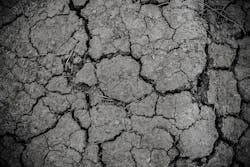The U.S. Environmental Protection Agency (EPA) has proposed a cleanup plan to address contaminated soil and sediment at the Diamond Head Oil Refinery Superfund site located in Kearny, N.J. The EPA plan also amends a 2009 cleanup plan to make the cleanup of the site more effective. Soil and sediment at the site are contaminated with PCBs, dioxin and volatile organic compounds resulting from decades of operation by a defunct oil recycling facility at the site.
“Removal of contaminated soil and sediment will mark significant progress in the cleanup of this site,” said Catherine McCabe, acting regional administrator. “This is a substantial investment in the future of Kearny, which has been burdened with far too many industrial pollution sites.”
The Diamond Head Oil Refinery Superfund site is a 30-acre area located near the Hackensack Meadowlands. The site was the former location of a waste oil reprocessing facility from 1946 to 1979. During facility operations, oily waste was stored, leaked and discharged directly to adjacent properties, including the wetland area to the south of the site, creating an “oil lake.” Facility operations contaminated soil, sediment, surface water, and groundwater with PCBs, dioxin, volatile organic compounds and other pollutants.
Because of the nature and complexity of contamination at the site, the investigation and cleanup of the site has been conducted in stages by EPA, the New Jersey Department of Environmental Protection (NJDEP) and by parties associated with the property.
During the 1970s, the state of New Jersey removed more than 10 million gal of oil and oily waste and more than 230,000 cu yd of oily sludge from the site. The facility was dismantled in the 1980s and over time smaller cleanups also took place. In 2002, after a request by the NJDEP and subsequent study, EPA added the site to the Superfund list.
In 2009, EPA chose a cleanup plan, which included a combination of disposal of contaminated material and bioremediation (the use of microorganisms to consume and break down pollution) to address the contamination. EPA subsequently determined that the bioremediation technology would not be effective in addressing the contamination. Instead, under today’s proposed amendment to the 2009 cleanup plan, contaminated soil in the area of the former oil lake will be dug up and disposed of at facilities licensed to receive the waste. The excavated areas will then be filled with clean soil. Approximately 49,000 cu yd of contaminated soil will be removed. This stage of the cleanup is estimated at $14 million.
The second component of EPA’s cleanup proposal addresses contaminated soil and sediment that are in areas of the site not thought to be major sources of contamination that can spread throughout the site. EPA is proposing to excavate and remove 2 ft of contaminated soil and then cover remaining contamination within and outside of the current boundary of the Diamond Head Oil Refinery property with clean fill. Wetland areas would be excavated to a depth of 2 ft to accommodate a soil cover. Sediment in the drainage ditch along highway I-280 would be excavated to an approximate depth of 18 in. Approximately 440 cu yd of contaminated soil containing PCBs, dioxins and other contaminants and 800 cu yd of contaminated sediment would be removed under this plan and transported to facilities licensed to receive the waste. The cost of this stage of the cleanup is estimated at $10 million. Contaminated groundwater will be addressed by EPA in a future cleanup proposal.
The proposed plan requires restrictions on how the site can be used in the future to ensure that activities at the site do not interfere with the cleanup. EPA will conduct a review every five years to ensure the effectiveness of the cleanup.
EPA will hold a public meeting June 29, 2017, to explain the proposed plan, and encourages public comments. The meeting will be held at 6:00 pm in the main council chambers at Town Hall, 402 Kearny Avenue, Kearny, N.J. Comments will be accepted until July 19, 2017.
Written comments may be mailed or emailed to:
Brittany Hotzler, Remedial Project Manager
U.S. EPA, 290 Broadway, 19th Floor
New York, NY 10007
212.637.4337
[email protected]


